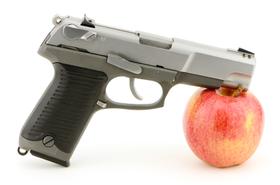The District of Columbia is a popular place for charter schools, with these institutions taking in about 41 percent of the city’s public school students. However, that percentage appears to be a tenuous one, as reports of high numbers of expulsions have recently begun to surface. With expulsion rates significantly higher than the rest of D.C. public schools, some educators in the city have begun to question the motives behind the actions. And while charter schools are disputing some of the data, no one seems to know for sure exactly how many students are kicked out of the city’s charter schools once they enroll.
Numbers are In, Concerns are Raised
The Washington Post recently conducted an in-depth piece on how expulsion rates at D.C. charter schools compared with the rates of other public schools across the city. The report was based on data released by the D.C. Public Charter School Board, which showed charter students were expelled at rates as high as eight percent in some charter schools. Charter schools expelled approximately 72 students for every 10,000 in the schools. At the same time, other public schools in the city expelled one student for every 10,000.
Not all of the charter schools in D.C. expelled students, leaving those that did with even higher percentages. Another Washington Post article reported that Friendship Collegiate Academy-Woodson, a charter high school, expelled eight percent of its student body during the 2010-2011 school year. In addition, 35 percent of the student body at Friendship Collegiate was suspended for 10 days or more during the academic year prior.
KIPP DC College Prep, another high school in the city, expelled five percent of its students during the past academic year, which came to a total of 17 students. This year, the school has not suspended any to date. KIPP DC, the elementary campus, has also expelled students, including a homeless six-year old boy who was suspended and then expelled last September. The mother of the boy appealed the case, but the expulsion stuck, and the boy attended another public school in his D.C. neighborhood until the family moved to Florida a few months later.
Reasons for the Expulsions
Standard expulsion policy for public schools in D.C. states that expulsion is limited to situations where a student brings a gun to school, commits arson, is caught with drugs or attacks another student or teacher. While some charters assert they follow a similar discipline policy, others have developed “zero tolerance” for relatively minor infractions, including tardiness, skipping class and dress code violations. The schools also state that the disciplinary policies are in place to ensure a safe classroom environment for all students that is conducive to learning.
Charter advocates also point out that many of the charter schools in D.C. accept a challenging student population that includes students from low-income families and minority students. Some of the charter schools also adhere to a philosophy that teaches character development, as well as academics. This approach calls for a clear, multi-tiered discipline policy that is carried out without fail. Even children in the younger grades are expected to toe the line or move on, as evidenced by the 434 suspension incidences reported by charters during the 2010-2011 school year.
Reasons for the Difference
While many theories are floating about concerning the difference in expulsion rates between charters and other public schools, the actual reasons for the difference are somewhat muddied. Charter schools, according to their governance structure, are allowed to form their own disciplinary policies, separate from the rest of the public school district. The policies do have to comply with federal civil rights laws, but beyond those guidelines, the charters enjoy significant freedom in how they choose to operate.
However, some educators are suggesting that charter schools are using the heavy arm of discipline to weed out challenging students. While charter schools have the ability to expel students fairly readily, public schools have no choice but to accept those students back into their classrooms. This practice can be particularly problematic if the expulsion happens after the early months of the academic year, since charter schools can keep the funding for any student that is still on their enrollment roster by October and still send that student to another public school.
Scott Pearson, executive director for the D.C. Charter School Board, told the Washington Post that discipline policies may be a factor for these schools when their charters are up for renewal. The statement was made as charter schools come under increased scrutiny by educators and parents within the city.
“We’re going to insist that student discipline policies are compliant with the law, and we’re going to encourage that student discipline policies be as enlightened as possible,” Pearson said.
Is More Scrutiny on the Way?
As awareness of the discrepancies in expulsion rates become public knowledge, the charter school board is under the gun to bring those numbers down. DC School Reform Now reports that the board is considering a measure that would shut down charter schools that fail to report student suspensions and expulsions on a monthly basis. This policy would ensure better scrutiny of disciplinary action by charter schools, so that concerns could be promptly addressed.
Charter schools have become a popular trend in public education, but reports like this are a source of concern for public educators across the country. As awareness of potential problems increases, perhaps charter schools in D.C. and in other areas will be held to a higher accountability by lawmakers, educators, parents and community members.















